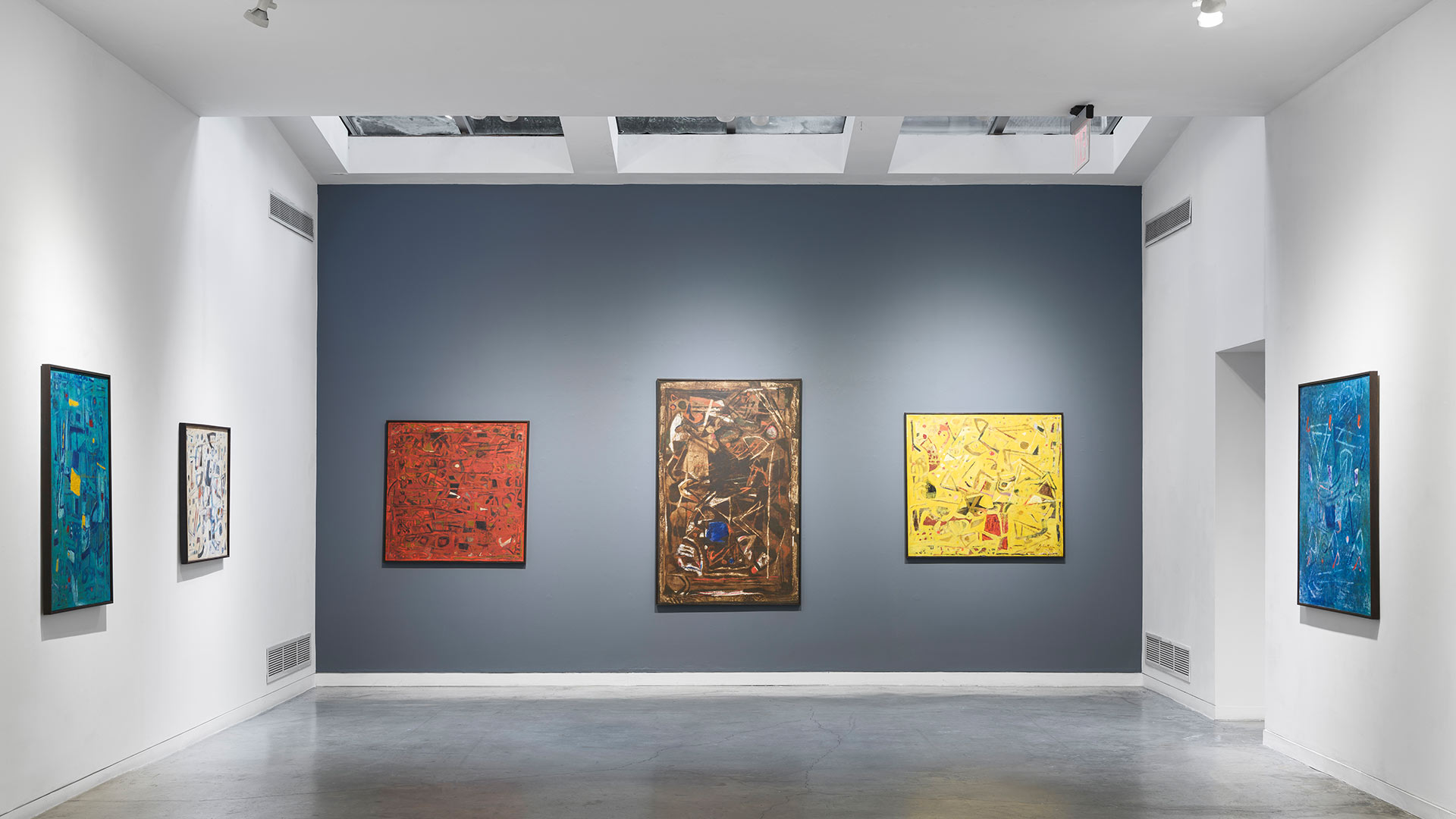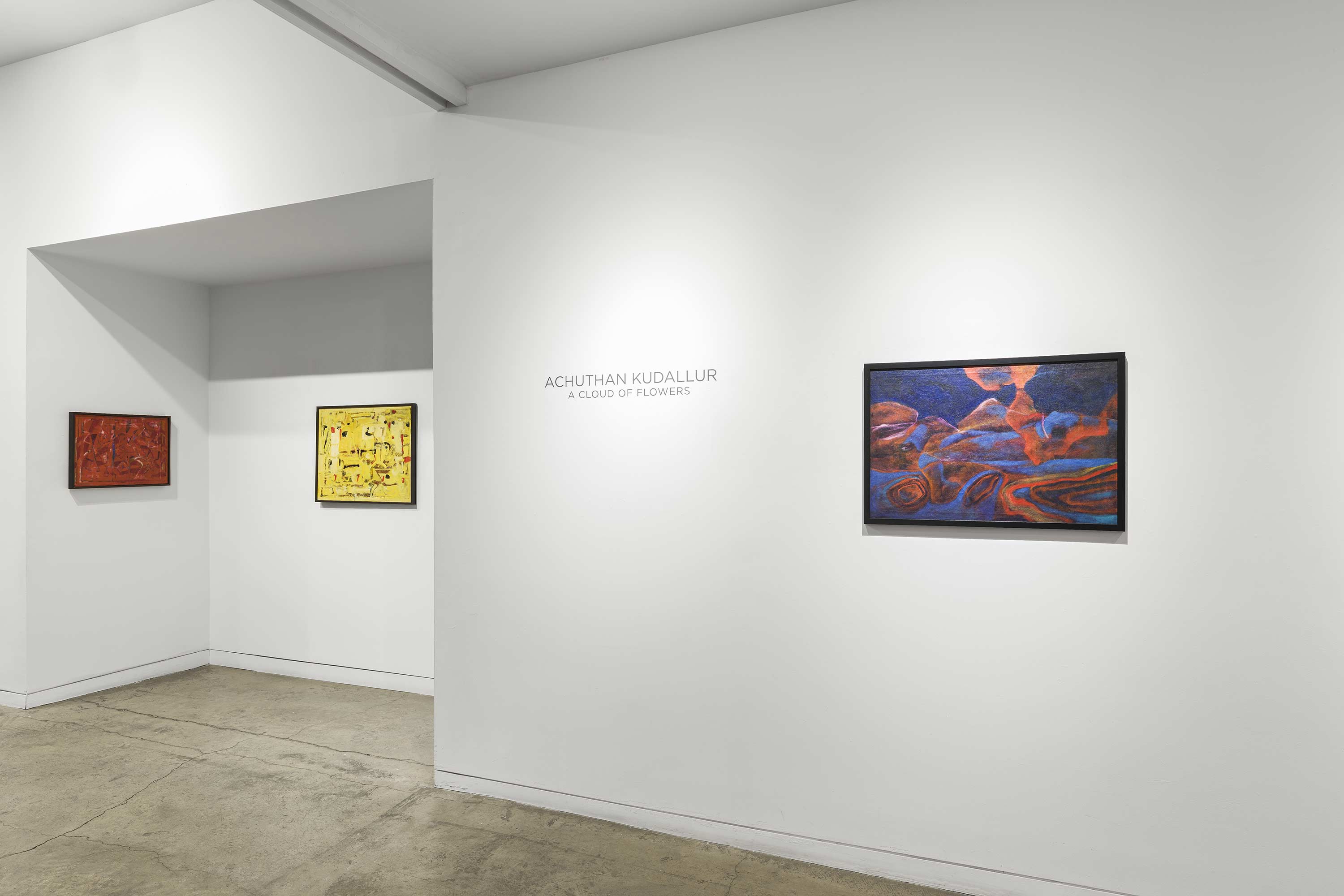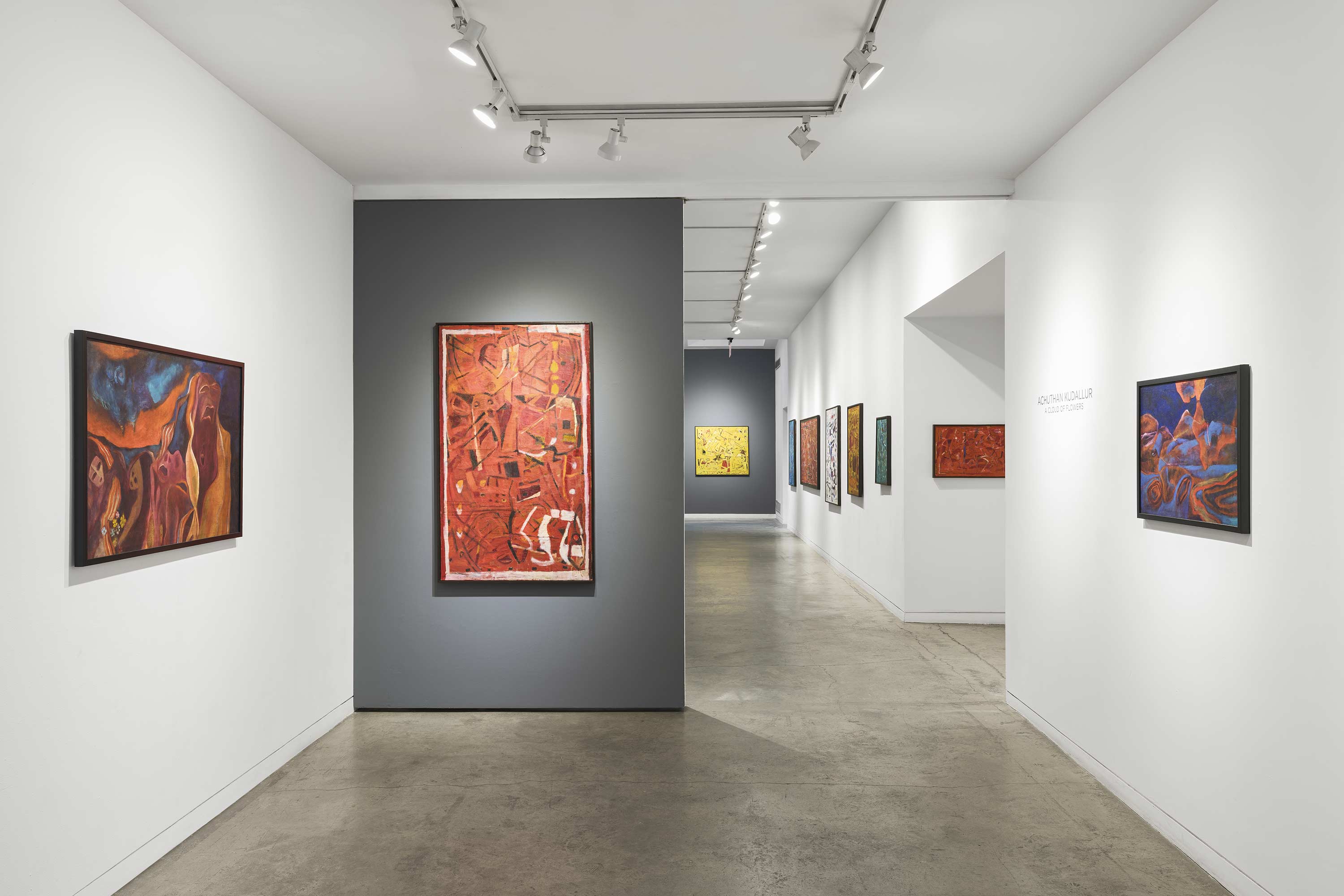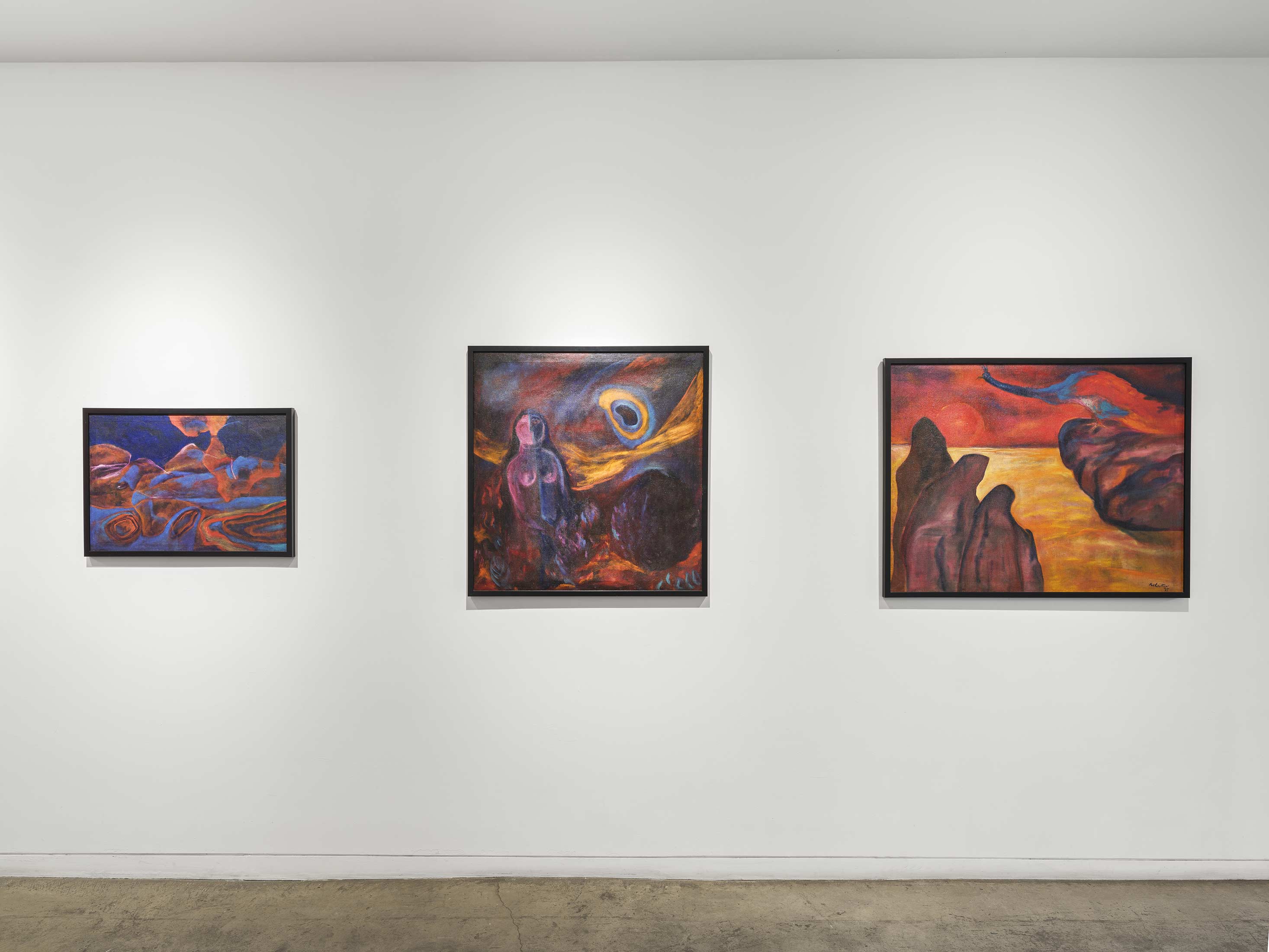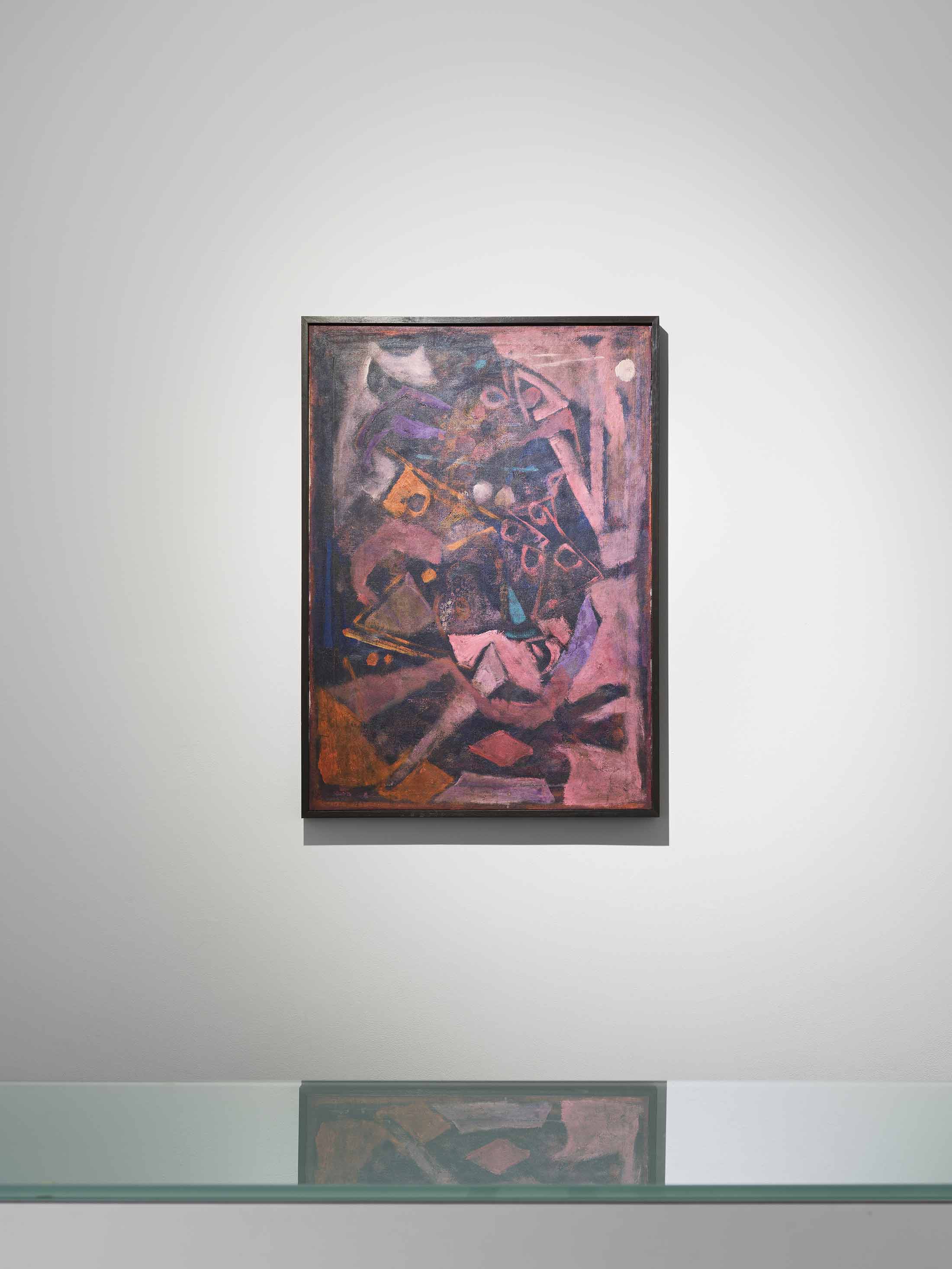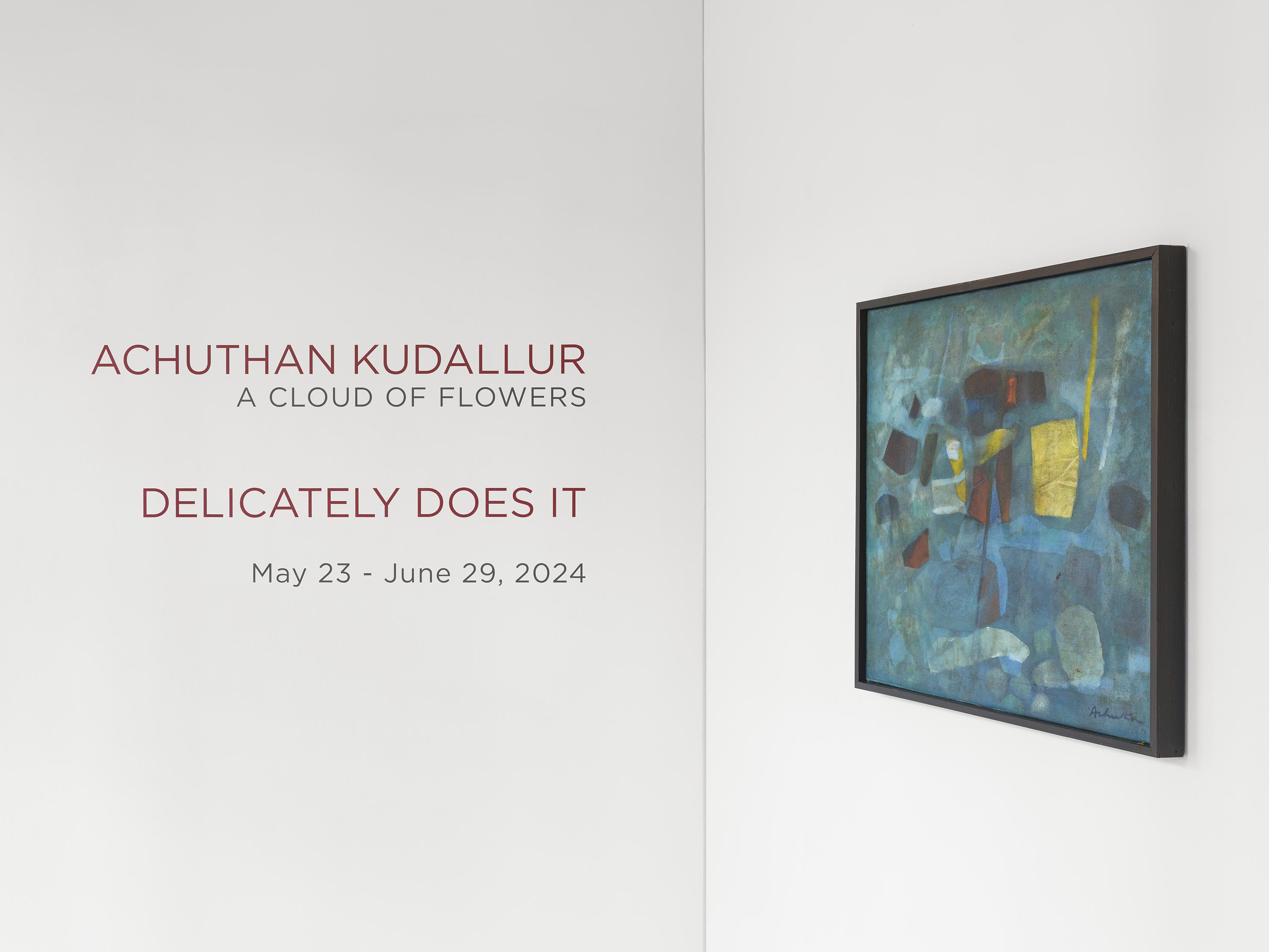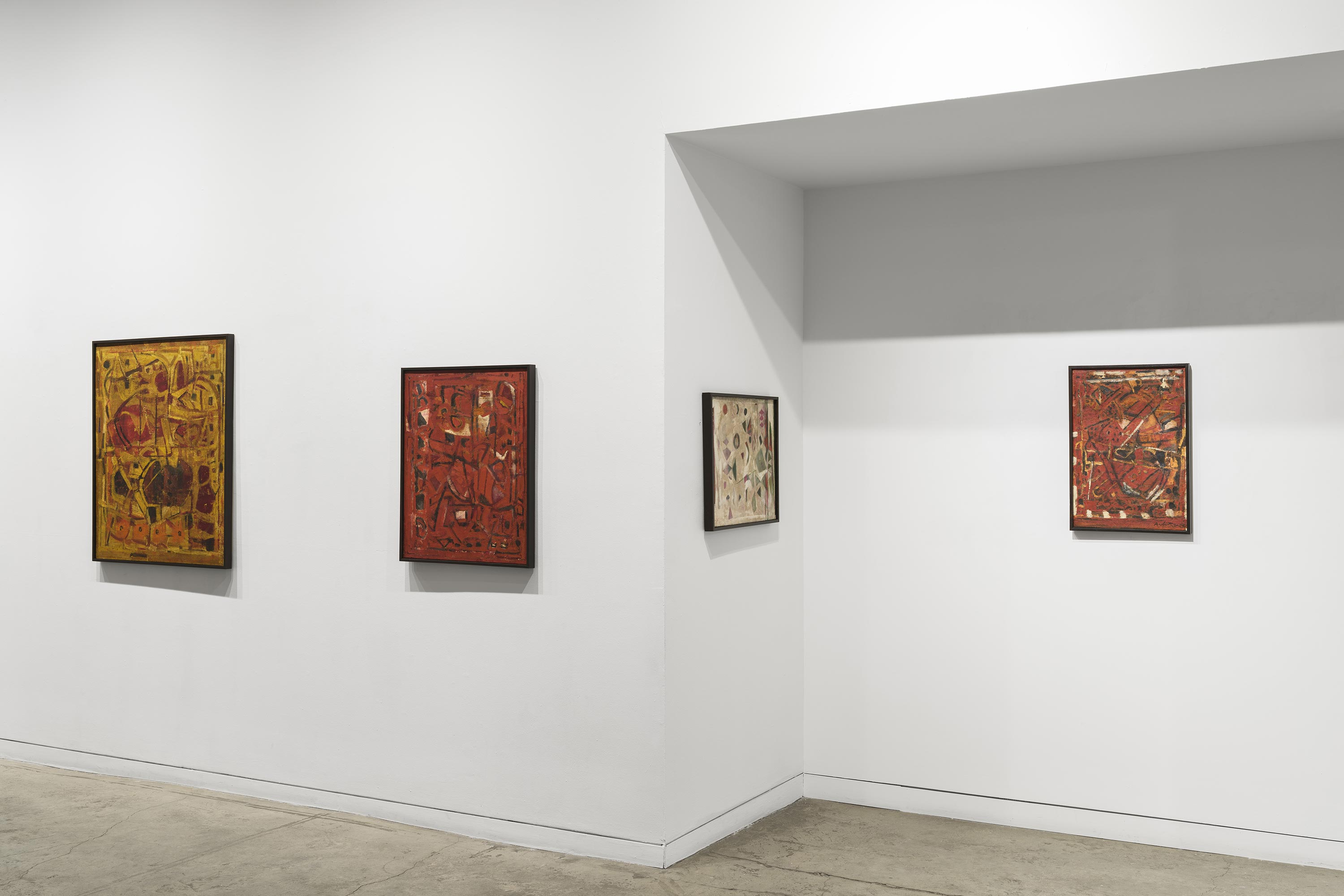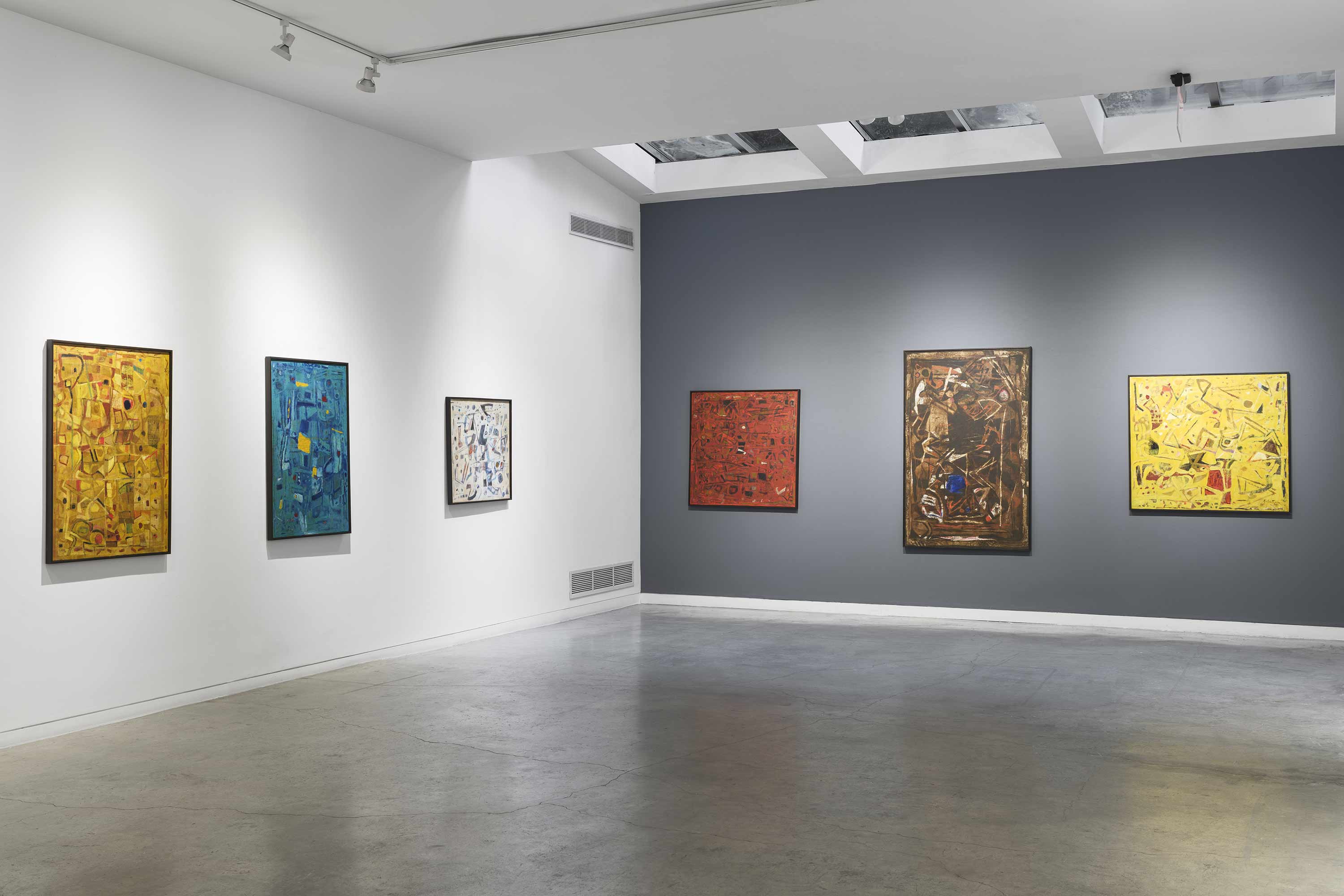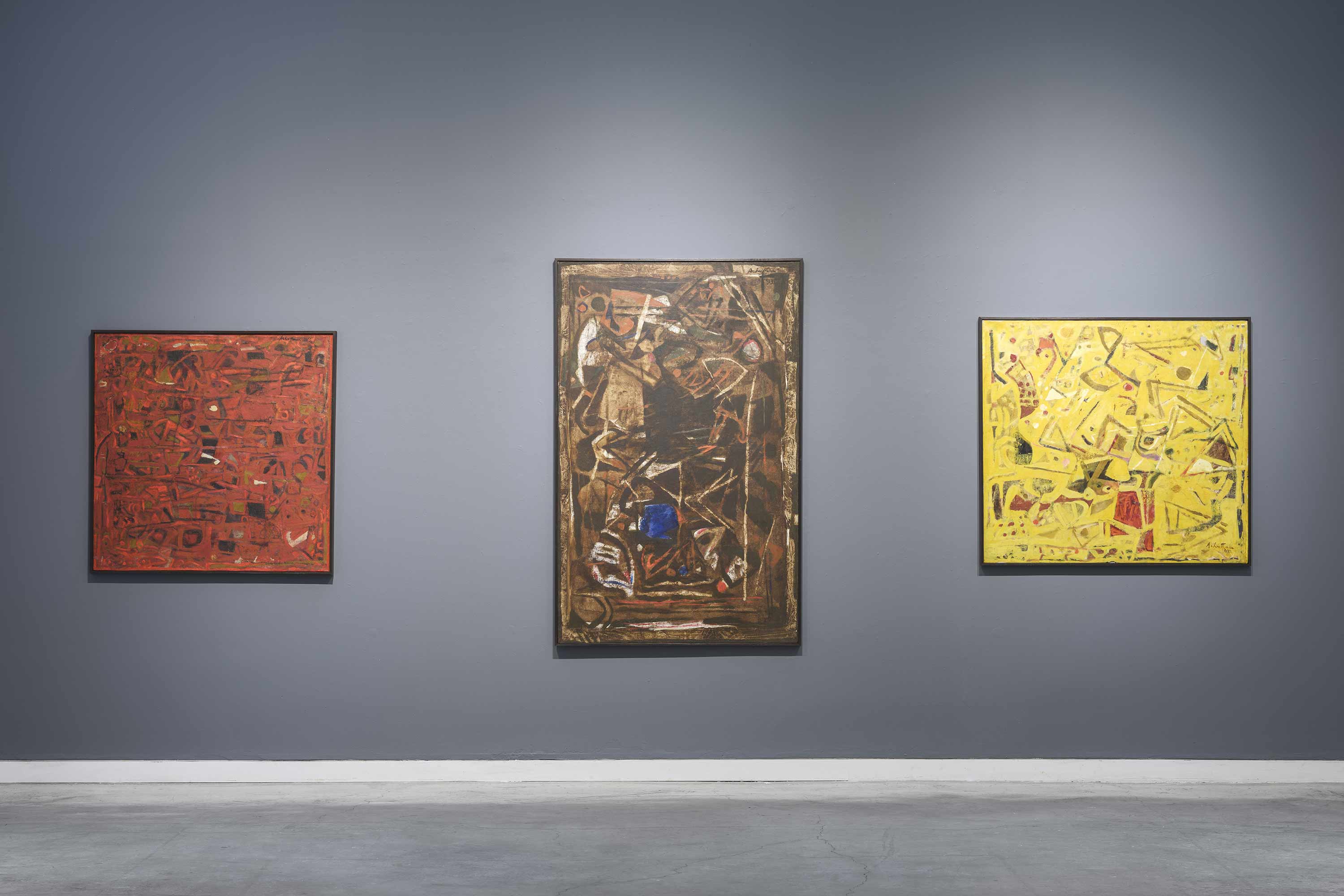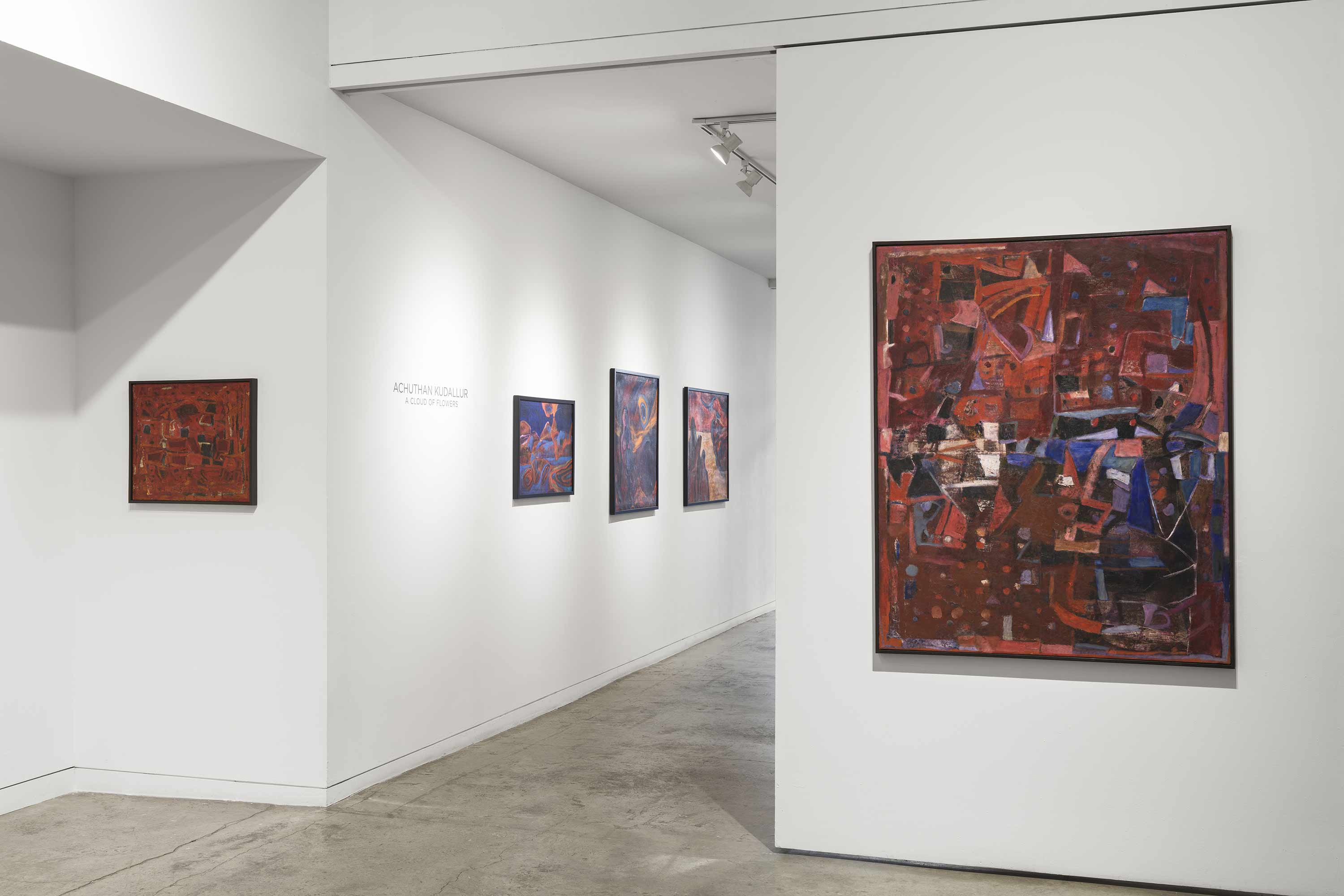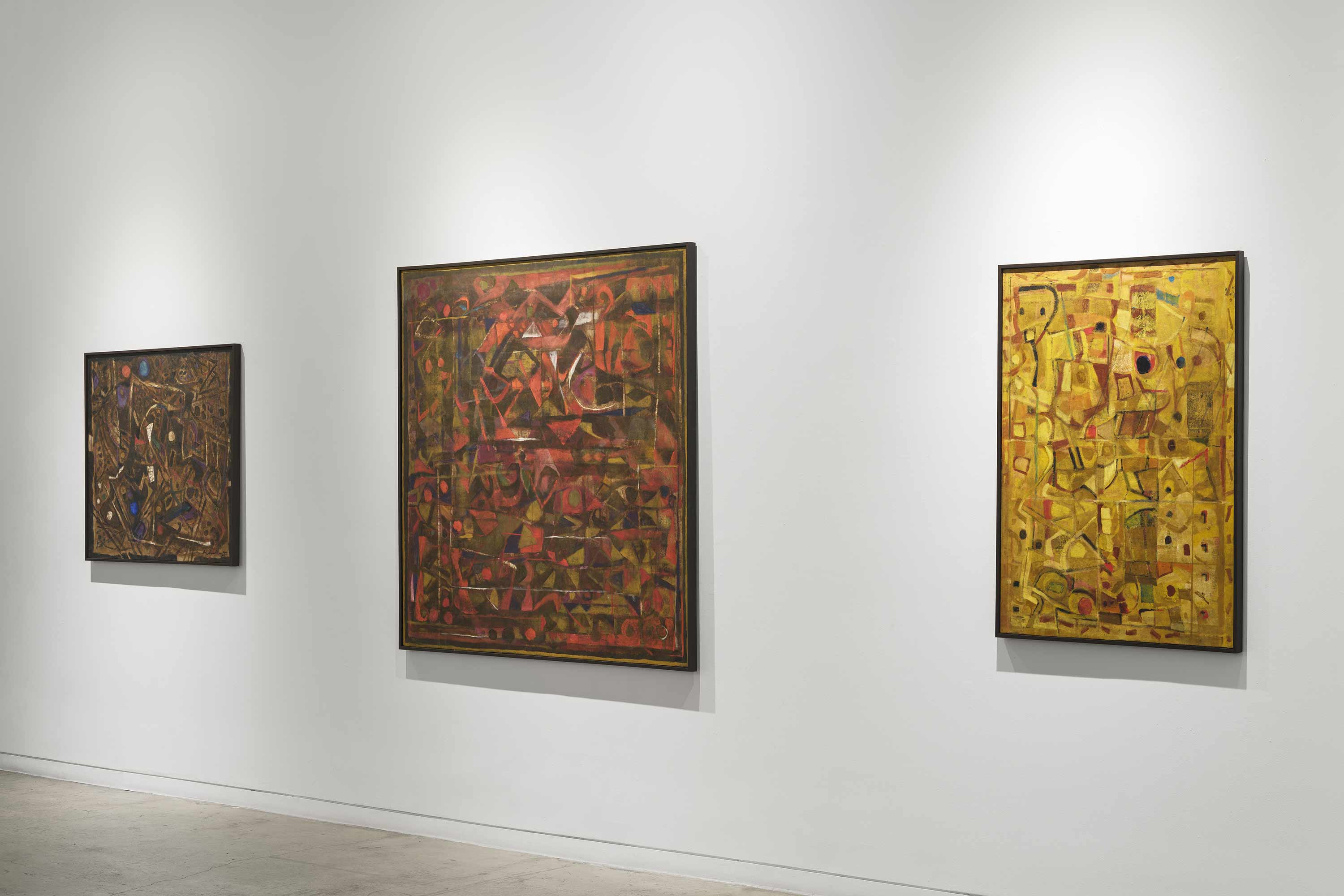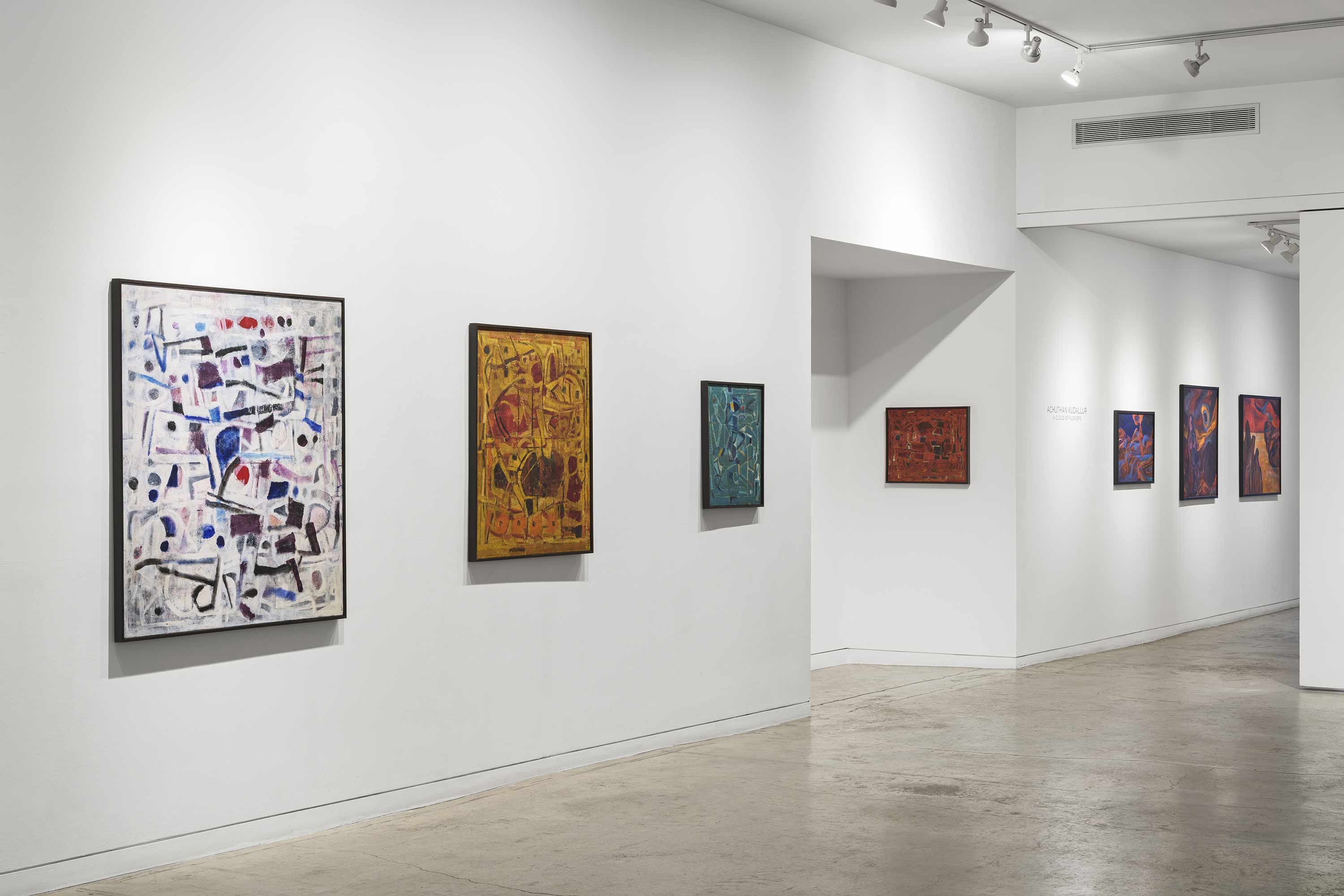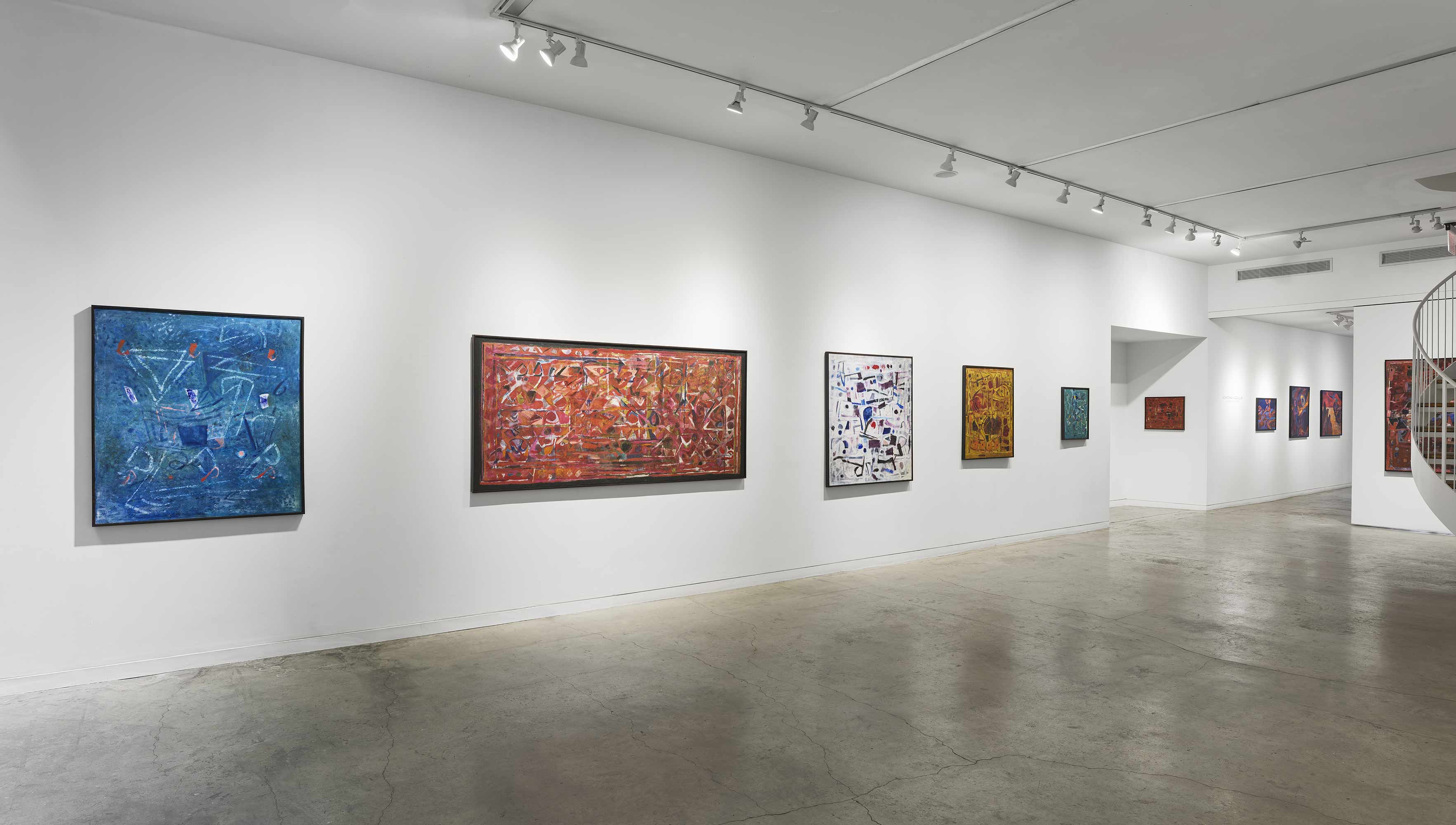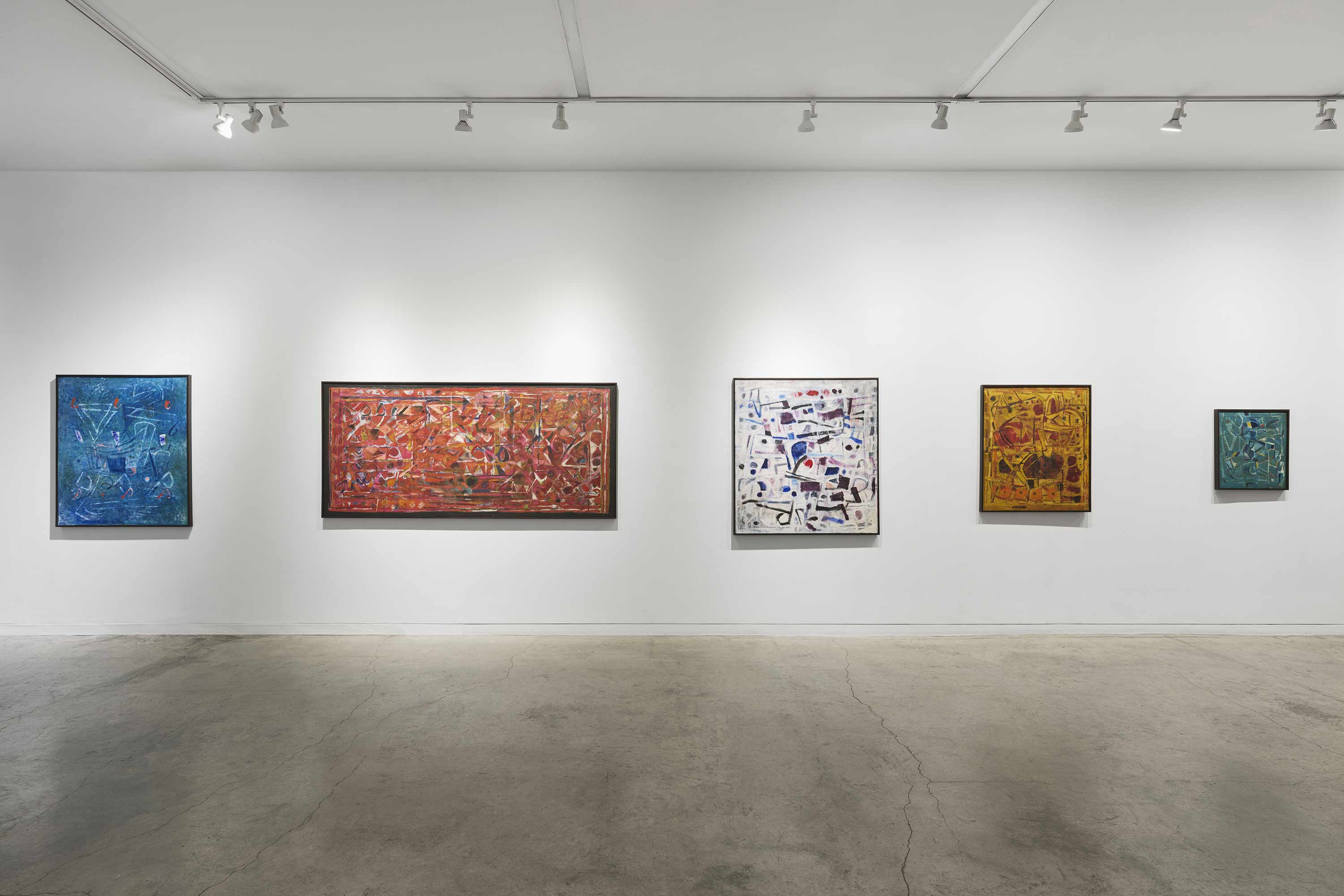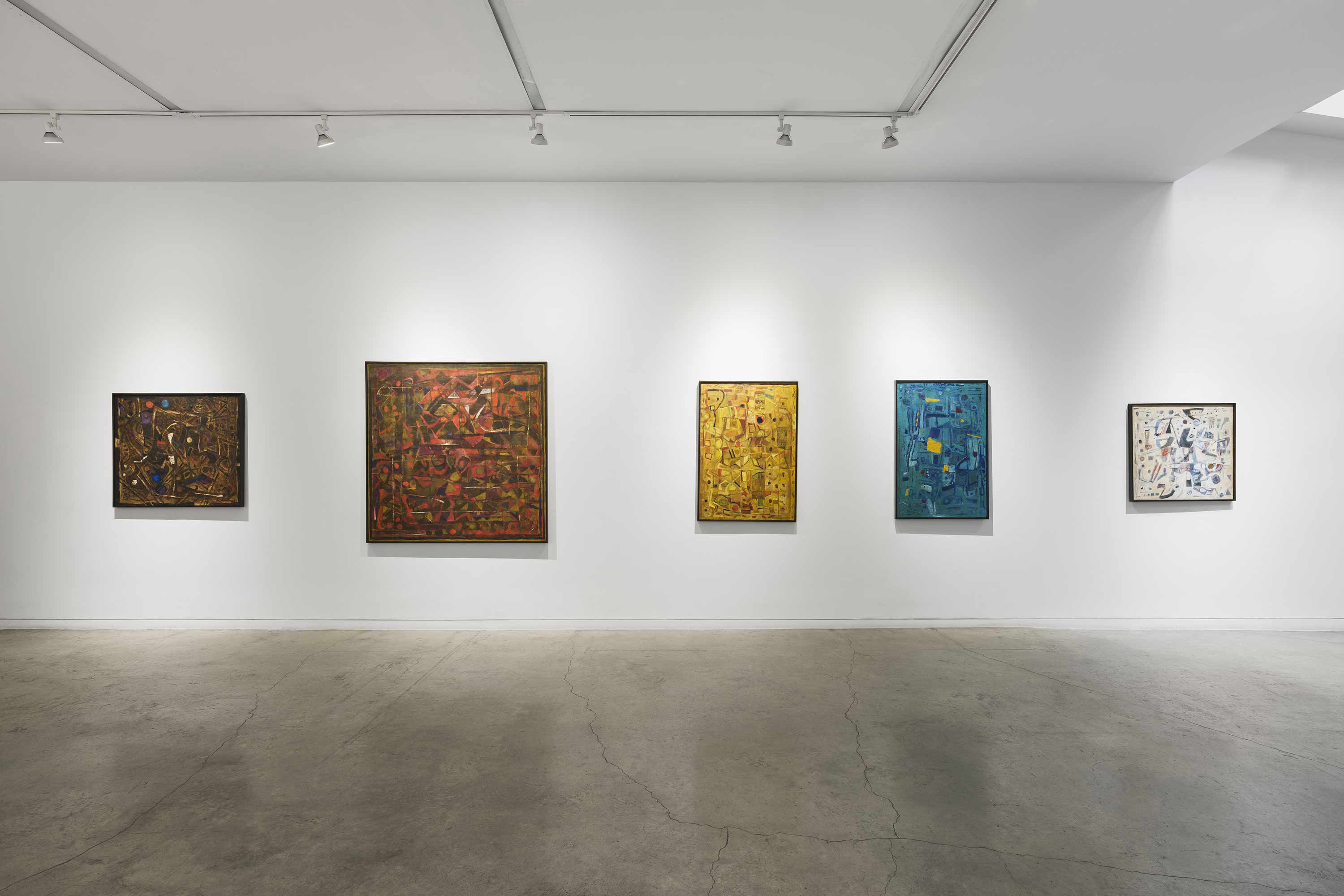Aicon is pleased to announce A Cloud of Flowers, the first solo exhibition of Achuthan Kudallur (1945-2022) in New York. From his early expressionist figurative paintings of the 1970s through his abstract canvases of the 2000s, the exhibition presents a comprehensive overview of the career of this significant force in India’s contemporary abstract art movement.
Born in Kerala in 1945, Kudallur became a prominent figure in the Madras Art Movement after joining the famed Arts Club in the 1970s at the behest of his friend Mohan Rao. While Rao would bail on the classes before they even began, he had already paid Kudallur’s fees, so Kudallur stayed. What Kudallur would find at the Madras Arts Club was an outlet for his creative spirit that had been dulled by an education in engineering.
Before engineering and before Madras, Kudallur dreamed of being a writer so he took classes with the goal of illustrating his stories. Instead, he found a love for painting that became the central focus of his life. He continued to work as a civil engineer in public works in Chennai until he could sustain himself as an artist. When he died in 2022, his home in Thiruvanmiyur was stacked to the rafters with canvases.
Kudallur’s early paintings are instantly recognizable by their distorted figures and a color palette dominated by cadmium red with highlights of grey, mauve, and cerulean blue. A Cloud of Flowers features five paintings from this period that share striking similarities to European Expressionism while retaining a regional sensibility for which the Madras School was known.
In his Untitled work from the 1970s, four figures with mask-like faces sway through the frame like flames licking across the surface. Darkly painted holes in their bodies add to their haunting presence—a presence somewhat tampered by a small bouquet of colorful wildflowers in the bottom corner. The fiery red of the sky is interrupted by a swooping blue owl, the play of colors distancing the scene from reality and bringing the composition into the realm of dreams and emotions. Very few works from this period remain as later, once Kudallur outgrew his need to capture such intense emotions, he destroyed several of the works, embarrassed by what they revealed of himself at the time.
It was not long before figuration made way for abstraction, and thus, the exhibition’s central focus is Kudallur’s obsession with color. During the early phase of his abstract painting in the late 1970s, Kudallur experimented and improvised with layers of color to create atmospheric and lyrical compositions. Again, the regional character so important to the Madras Art Movement is discernible in Kudallur’s abstract canvases.
He captures in color and geometric forms the memories of his childhood: Kathakali dances, countless festivals, and the chanting of mantras and rhythmic drumming of the midnight ritual performances in his hometown. Much like another abstract artist he greatly admired, Wassily Kandinsky (Kudallur once said he was planning to write about his experiences as an artist only to come across what Kandinsky wrote fifty years earlier and realize he had already said everything Kudallur wanted to say), Kudallur’s later works are regularly compared to music. Kudallur himself has said that "colors are pure improvisations like a musician who knows the subtleties and its nuances in handling the musical notes."
A single color dominates Kudallur’s abstract compositions—whether that be red, blue, yellow, brown, or white— which keeps them tethered to some sense of order. Although the works are unplanned, the artist’s obsessive practice means he has mastered the improvisational combining of colors and shapes. In a November 2010 interview, Kudallur said:
“It is never planned. When I have a particular color in mind for a painting, it invites its own friendly colors that go with it. Suppose I am using green or blue, I will go for colors connected to that spectrum and not brown or black. That is where the energy is dissipated. … Color guides in its own direction. You have to just help the whole thing develop. Because of continuous painting, I have developed a certain sense of order which is not very symmetrical. And I try to bring that order in the canvas.”
Whether using distinct shapes with sharp edges like in White (2002) or softer versions that look like pebbles underwater in Untitled (n/d), Kudallur pairs energetic combinations of shapes with color to create harmonized surfaces. The red canvases are notable for their subliminal link to his childhood in Kerala, while a few stand out for his rare deployment of the color green. A Cloud of Flowers brings together paintings by this maestro of color that have never been seen before in the United States.
Read more +
Read less -







 Sign in with email
Sign in with email


